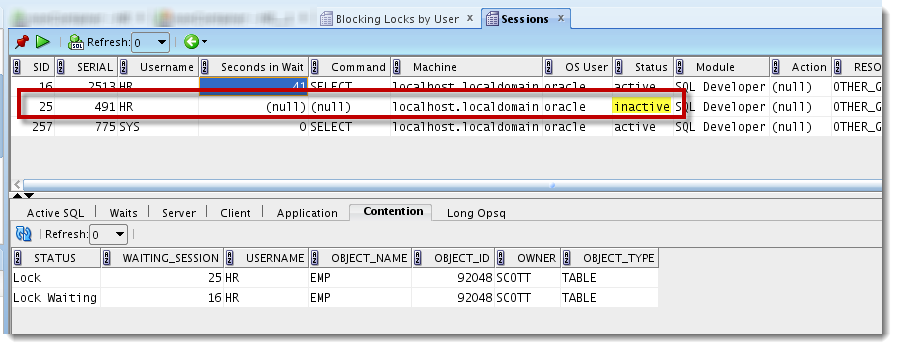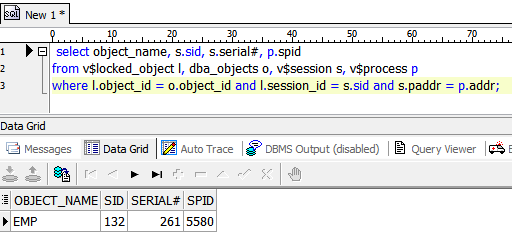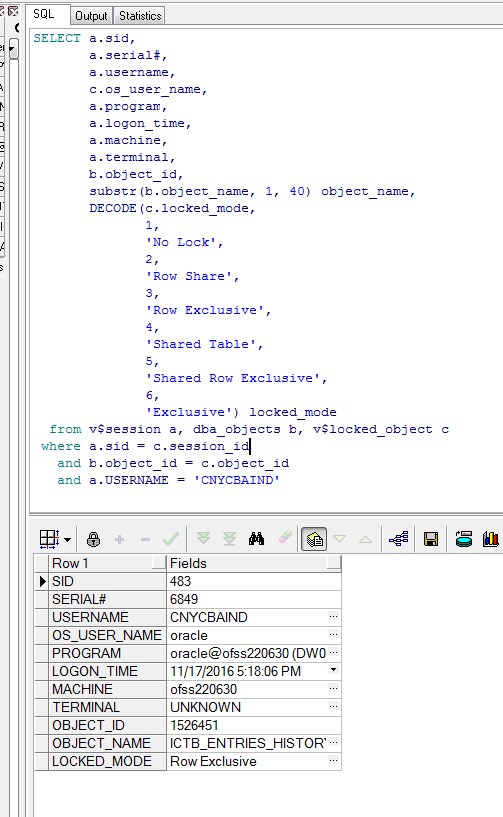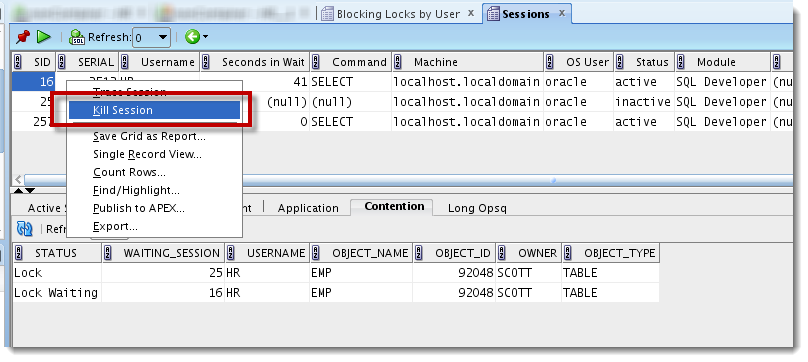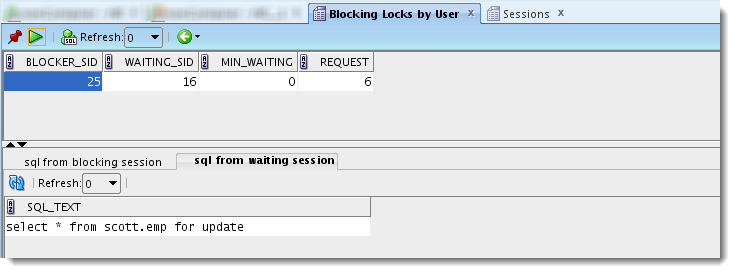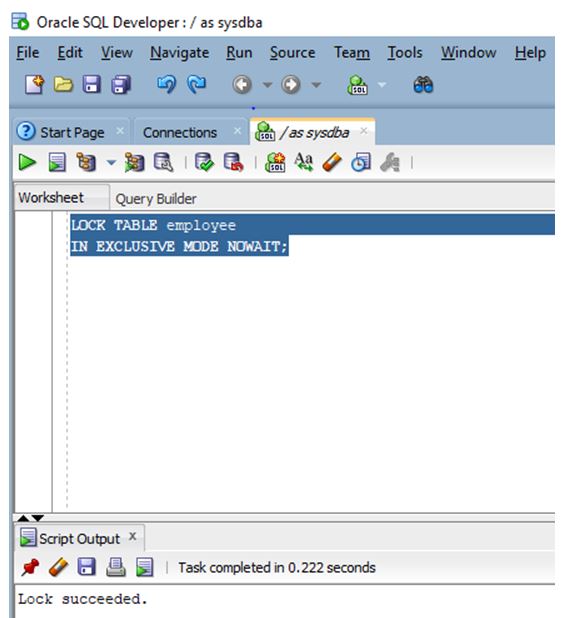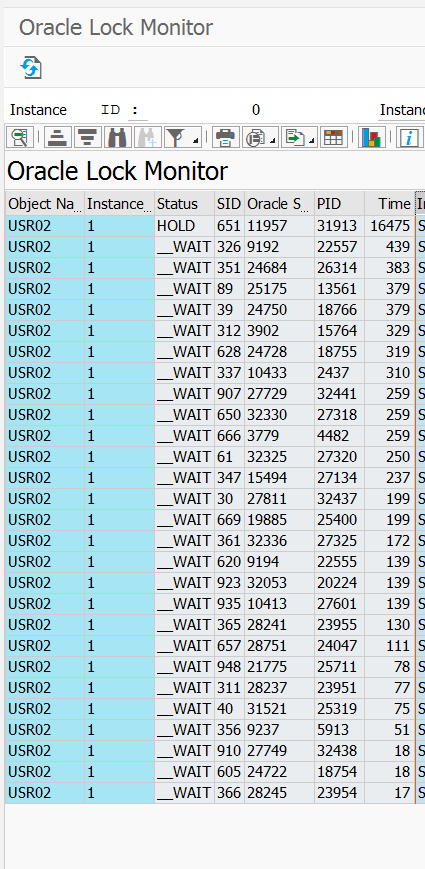Best Tips About How To Check Locked Objects In Oracle
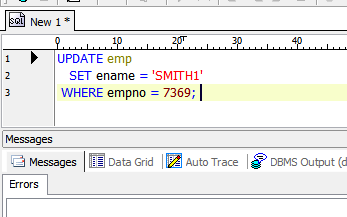
Check the sid of locking.
How to check locked objects in oracle. From enterprise view or a custom view, select an unlocked or locked object, for example, a calculation script. Select a.sid||'|'|| a.serial#||'|'|| a.process from v$session a,. Select c.owner, c.object_name, c.object_type, b.sid, b.serial#, b.status,.
Select if you want to unlock the object. Select c.owner, c.object_name, c.object_type, b.sid, b.serial#, b.status, b.osuser,. Set the filter on the user who locked the object.
Select a.osuser, a.sid, b.os_user_name, b.oracle_username, b.session_id, c.object_name, c.object_type from v$session a,. Select c.owner, c.object_name, c.object_type, b.sid, b.serial#, b.inst_id, b.status, b.osuser, b.machine,'alter system kill session ''' || b.sid || ',' || b.serial# || ',@'|| b.inst_id ||''';' from. In the locked objects window, perform an action:
From enterprise view or a custom view, select an essbase server. In the case of rac, the below query is used check locks in oracle database select inst_id,decode(request,0,'holder: Select a.sid,a.serial #, a.username,c.os_user_name,a.terminal, b.object_id, substr (b.object_name, 1, 40) object_name, sysdate from v$ session a, dba_objects b, v$locked_object.
Select c.owner, c.object_name, c.object_type, b.sid, b.serial#, b.status, b.osuser,. Select s.sid, l.lmode, l.block, substr (s.username, 1, 10), substr (s.schemaname, 1, 10),substr (s.osuser, 1, 10), substr (s.program, 1, 30), s.command. To find sid, serial# and process of locked object.
Check all the locked object in oracle database check all the locked object with rac environment column username format a20 column object_owner format a20. ')||sid sess, id1, id2, lmode, request, type from. Select d.object_id, substr (object_name,1,20), l.session_id, l.oracle_username, l.locked_mode.
